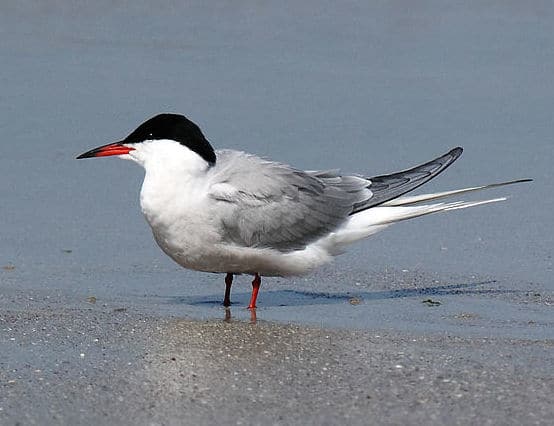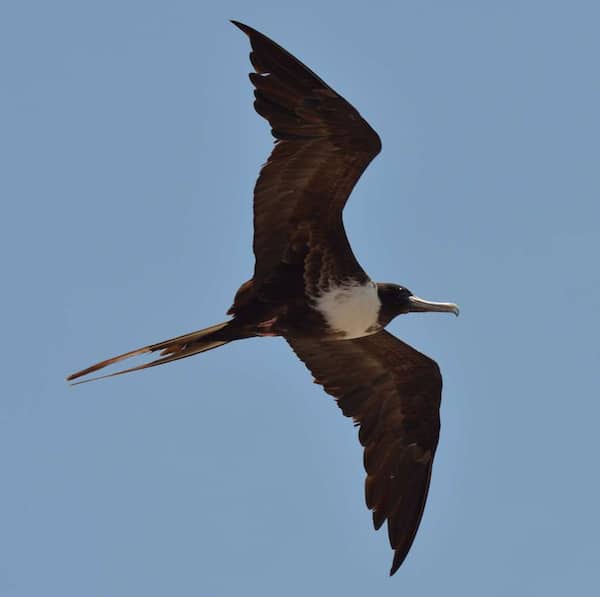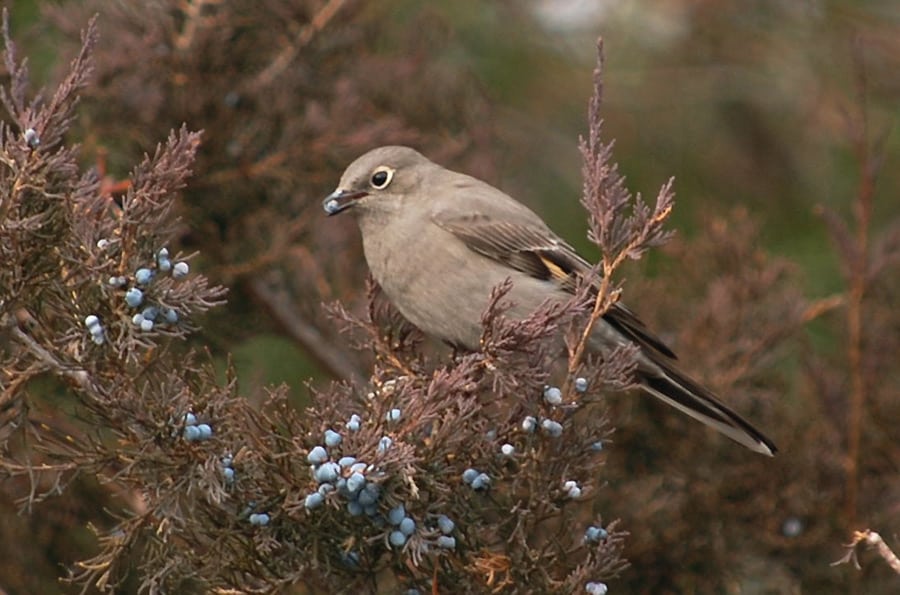During breeding season the bill, which is black most of the year, is black tipped and the colorful base is dark red-orange. In breeding plumage the common tern is not white on the body as it is the rest of the year. Instead, the underparts are distinctly gray, only a bit paler than the back. The lower face, or cheek, is white, though, standing out rather starkly between the black cap and gray throat and neck.
Common terns breed in large colonies in northern North America and on the East Coast, and they are fairly common migrants on the Pacific coast from Washington south, rare in winter along the Gulf Coast and in southern California.
A distinctive call is a low, piercing, drawn-out kee-ar-r-r, also kit or tyik.
Listen to a Common Tern:




